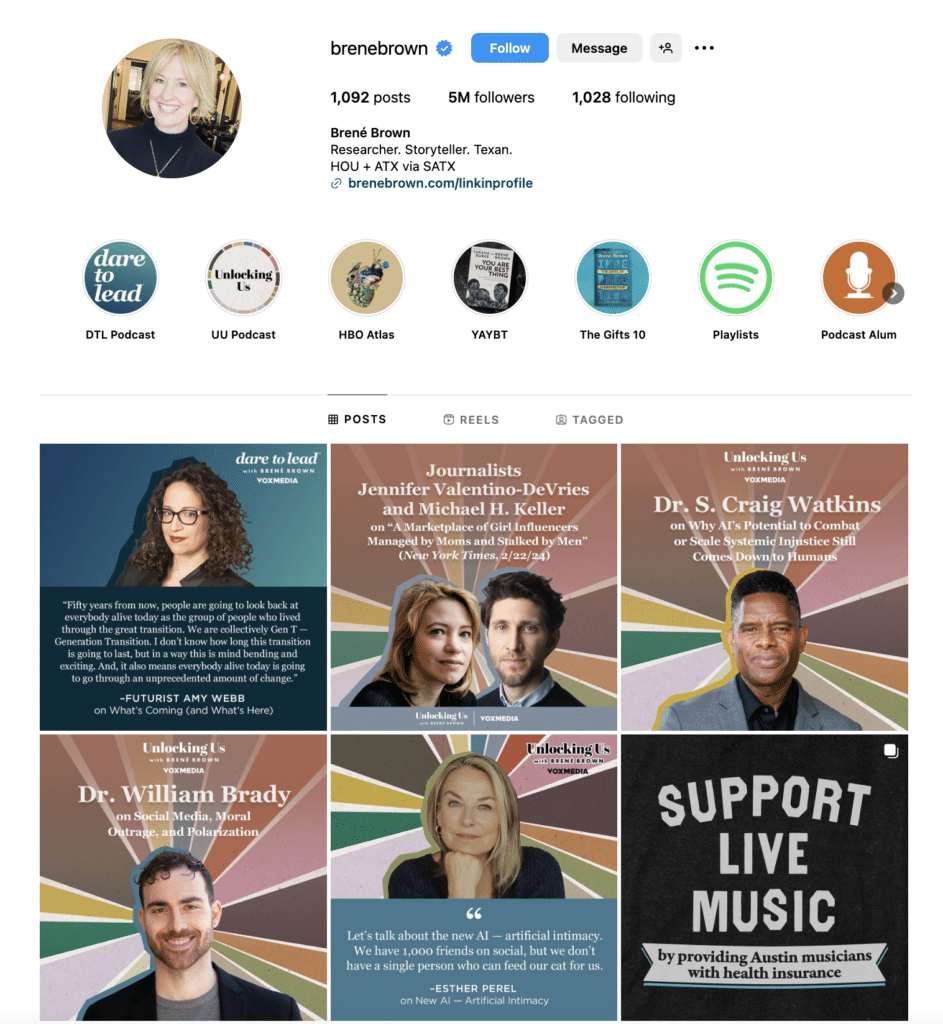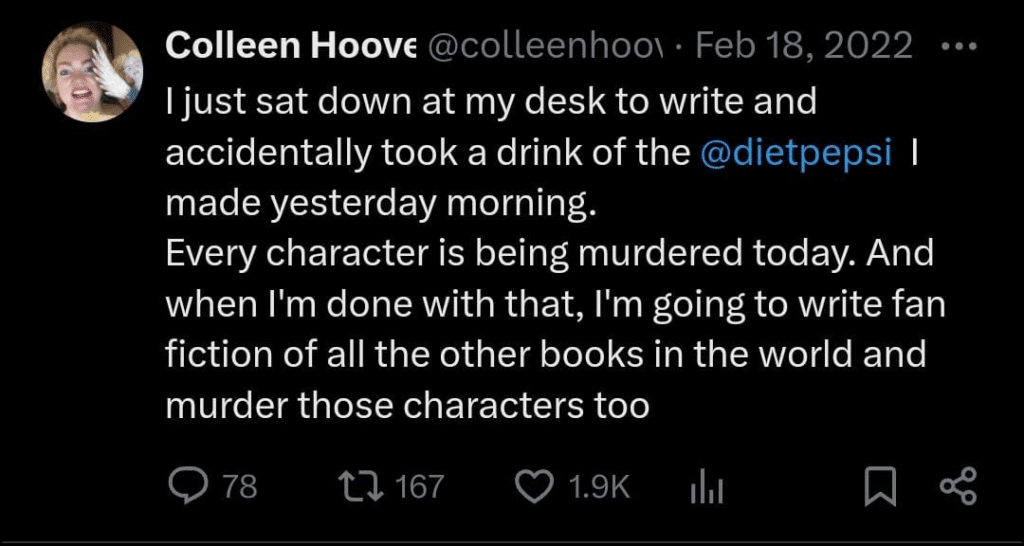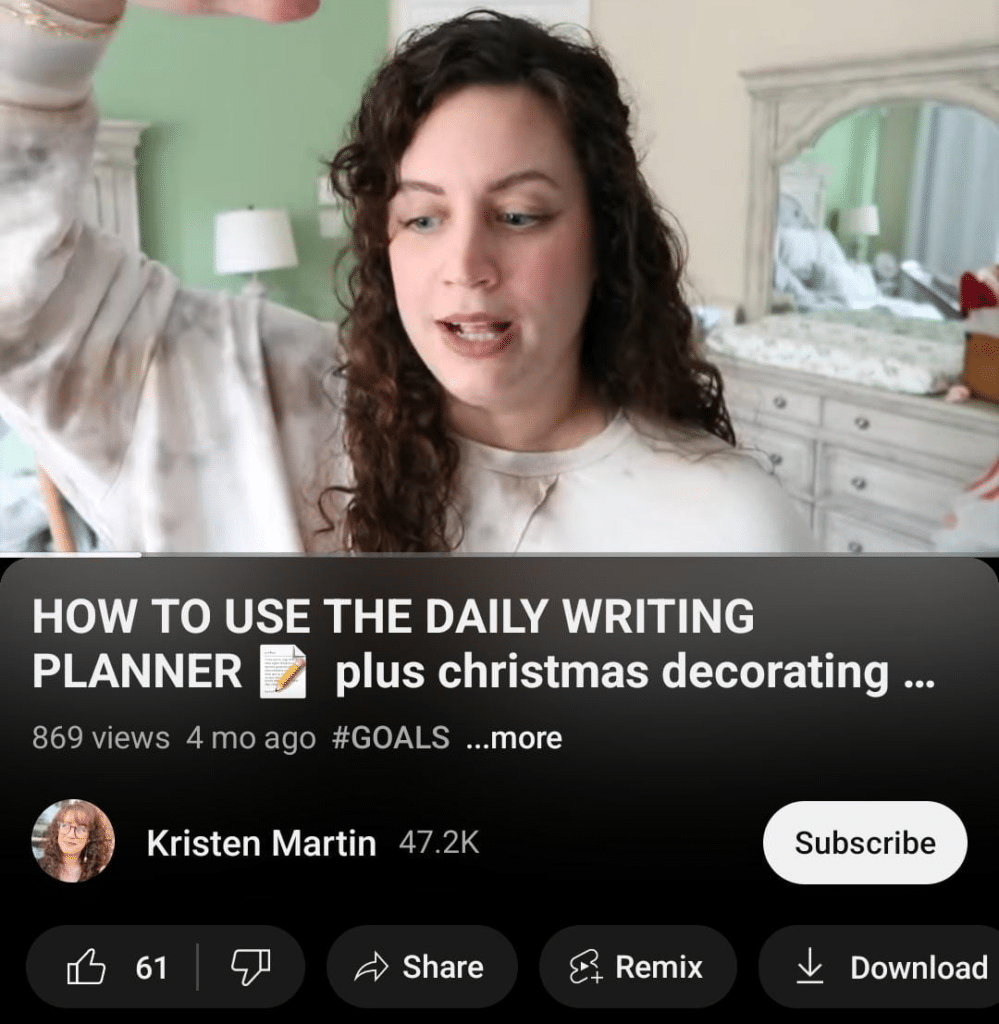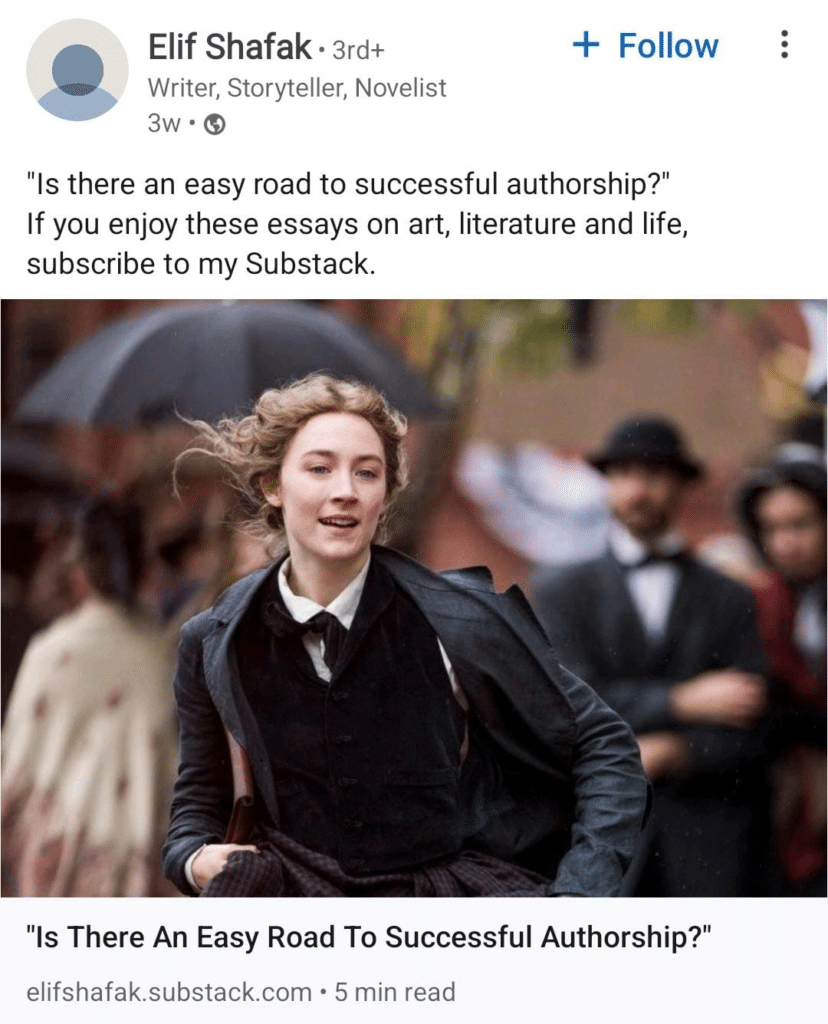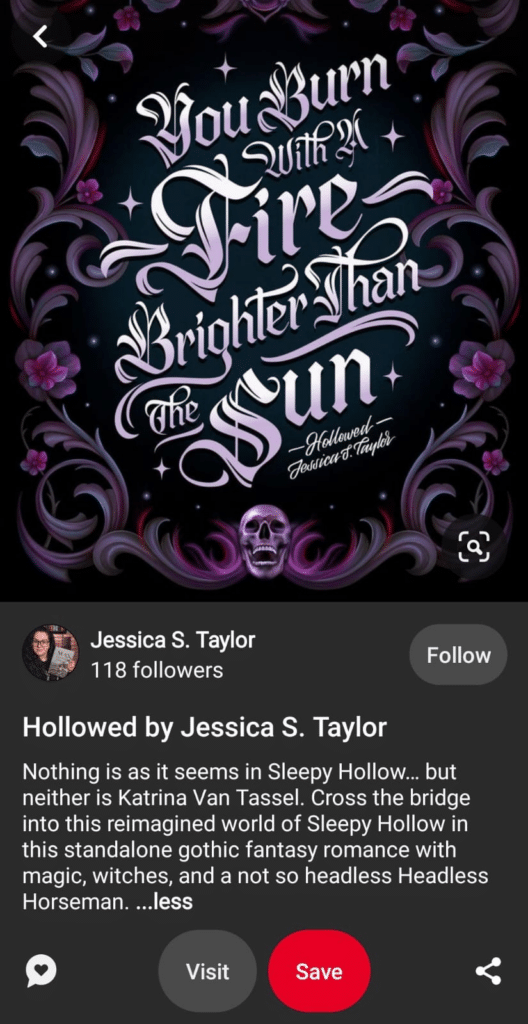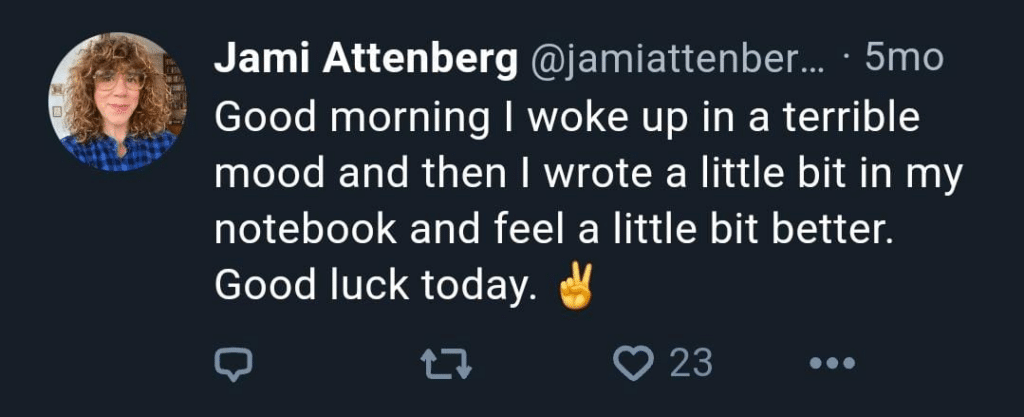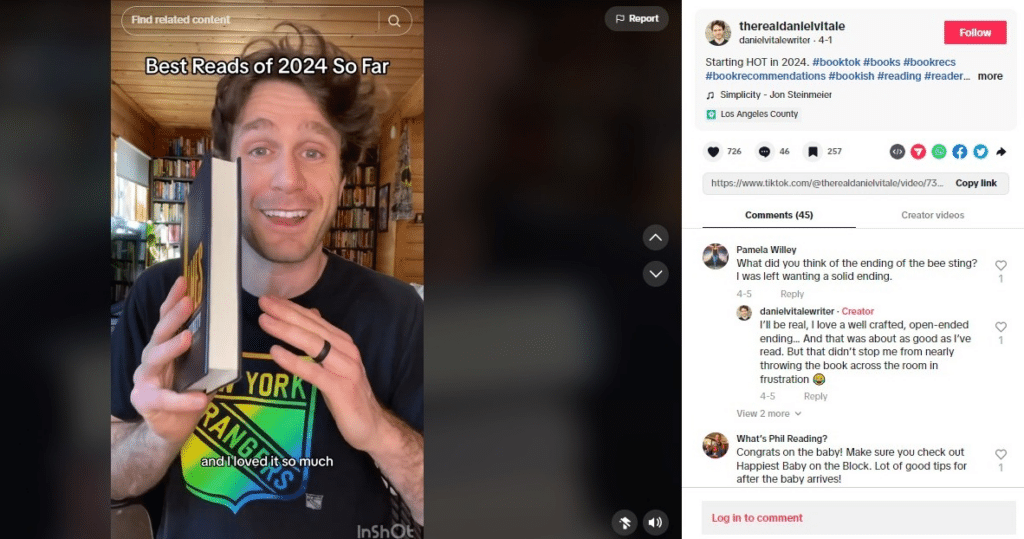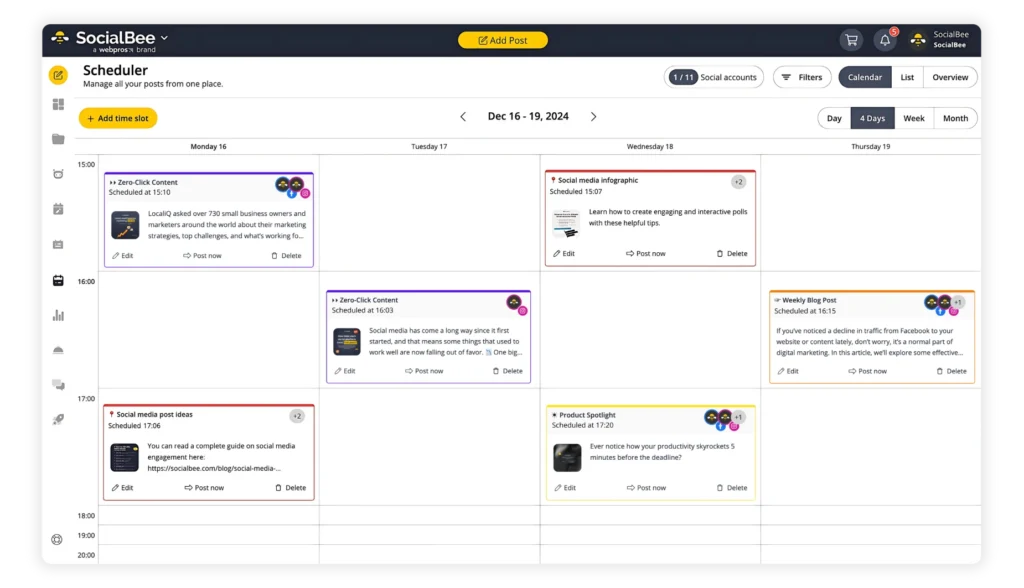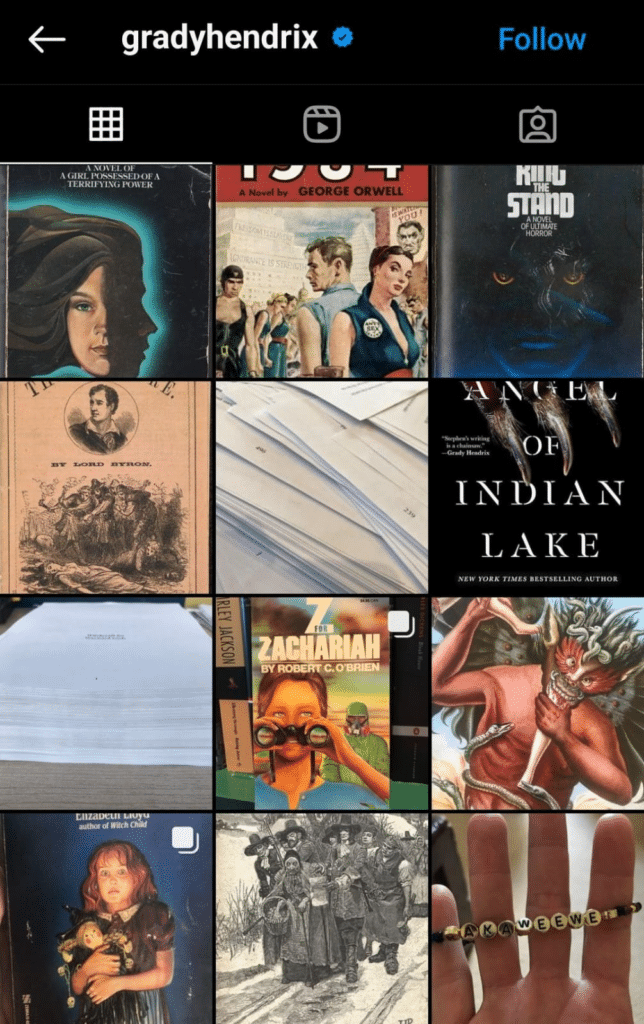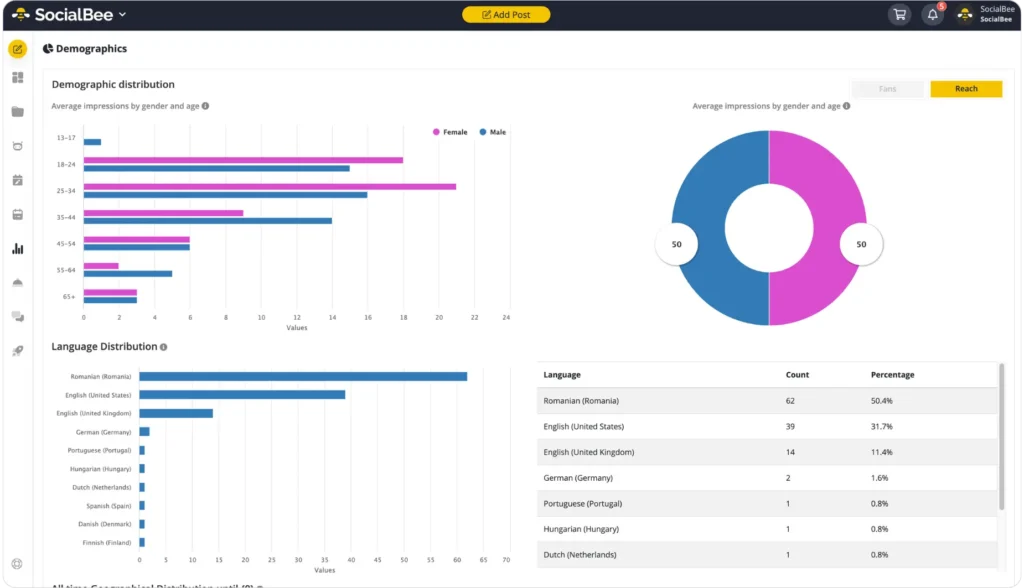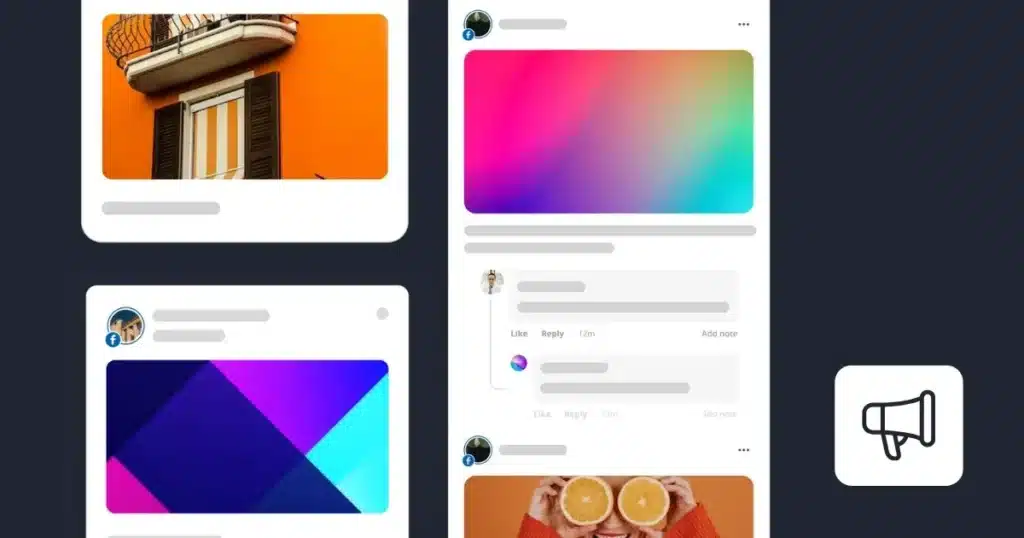Is your social media presence as impactful as your writing? Nowadays, mastering social media is a critical part of the writer’s journey to success.
However, finding the right strategy to engage with your online readers online can be as challenging as fighting writer’s block.
In this article, we’ll explore the most writer-friendly social media platforms and unravel effective strategies that align with your personal brand and creative flow. Shall we begin?
We’re SocialBee LABS SRL, part of WebPros. We use the information you provide to share relevant content and product updates, as outlined in our Privacy Policy. You can opt out anytime.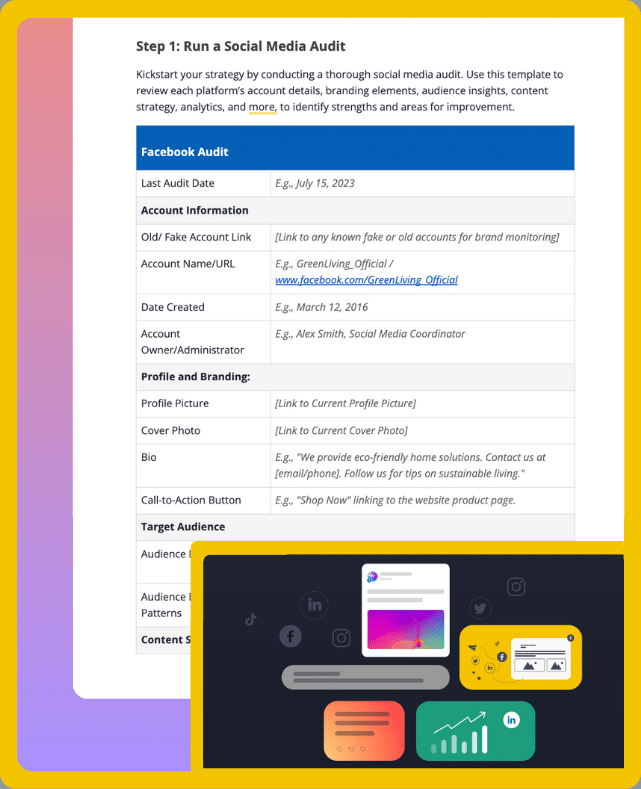
Short Summary
- The best social media platforms for writers are Facebook, Instagram, X (Twitter), YouTube, Pinterest, LinkedIn, TikTok, and Bluesky.
- Facebook is a powerful tool for writers to grow their presence. Writers can foster a community of engaged readers by actively engaging in genre-specific Facebook Groups and using Facebook Live for interactive sessions. Additionally, utilizing Facebook Ads can help target and expand your reach effectively.
- Instagram is ideal for visually-driven writers. By maintaining a consistent aesthetic and regularly posting engaging content like book quotes and sneak peeks, writers can build a strong following. Interactive stories and well-curated posts keep the community lively and engaged.
- X (Twitter) is perfect for quick, engaging updates and connecting with the literary community through hashtags and chats. Writers can share brief insights, join discussions, and reach out to a broad audience with minimal effort.
- YouTube allows writers to dive deeper into their creative process. By producing a variety of content like interviews and book trailers, and optimizing for search, writers can effectively communicate their brand and connect with viewers on a personal level.
- LinkedIn helps writers establish professional credibility and network with industry peers. By keeping profiles updated and actively publishing insightful articles, writers can position themselves as experts in their field.
- Pinterest is great for driving traffic to a writer’s website through visually appealing pins related to their books and writing process. Organizing these pins into well-themed boards can enhance discoverability and engagement.
- Bluesky offers writers the chance to shape their presence and reach audiences without the constraints of complex algorithms. It’s an excellent space for genuine interaction and community building.
- TikTok, or #BookTok, provides a dynamic platform for reaching younger audiences with quick, entertaining videos related to books and writing. Participating in trends and creating engaging content can significantly amplify a writer’s visibility.
- If you’re a writer looking to amplify your social media presence, SocialBee is the tool that transforms your social media strategy into a seamless, efficient process. It provides a single workspace where you can create, share, and analyze your content easily.
Why Do Writers Need a Social Media Presence?
By having a social media presence, writers can have direct and continuous interaction with readers. This not only helps them gain visibility in a crowded market but also gives them more control over their brand and image.
Additionally, a strong social media presence opens up numerous networking opportunities with other writers, publishers, and industry influencers, potentially leading to collaborations within the publishing community.
Here’s why writers need a social media presence:
- Direct interaction with readers: Unlike traditional book tours and signings, digital channels allow for continuous, direct interaction. This enables writers like yourself to cultivate a personal and genuine connection with their readers.
- More visibility: A strategic social media presence boosts a writer’s visibility, cutting through the noise of a saturated market. It can amplify reach, not just to existing fans, but to potential readers who aren’t yet familiar with your work.
- Real-time feedback and engagement: Seeing how your audience responds in real-time to your content helps you determine how your work resonates with the public and adjust your approach accordingly.
- Better control over their brand: Social media allows writers to personally represent their image and tone of voice, helping them attract readers who resonate with their style.
- Networking opportunities: Connecting with fellow writers, publishers, agents, and industry influencers can lead to exciting collaboration and book marketing opportunities.
Best Social Media Platforms and Strategies for Writers
A strategic approach to social media can help you find your niche audience in the digital writing space. To build your online presence as a writer, you may have to try out various social platforms, each with its unique advantages and approaches.
Here are the best social media platforms and strategies for writers:
- Facebook: Great for building and nurturing a community, hosting book launch events, and engaging with readers through groups and detailed posts.
- Instagram: Ideal for visual storytelling, sharing aesthetically pleasing book photos and inspirational quotes, and connecting with the Bookstagram community.
- X (Twitter): Excellent for real-time engagement, sharing quick updates, and participating in literary discussions.
- YouTube: Best for long-form content, including book trailers, detailed discussions about writing, author interviews, and reading sessions.
- LinkedIn: Useful for establishing professional credibility, networking with publishers and other authors, and sharing articles related to the writing craft or book industry.
- Pinterest: Perfect for creating mood boards for books, sharing visual content that drives traffic to blogs or book sales pages, and inspirational writing tips.
- Bluesky: Excellent for fostering direct reader engagement and community building through a clean and friendly interface.
- TikTok: Great for reaching younger audiences with engaging videos, participating in viral challenges, and leveraging the BookTok community to boost visibility.
A. Facebook for Writers
Facebook, with 2.9 billion monthly users, is an excellent place for writers looking to grow their online presence among demographics between the ages 18–44.
As one of the first major social media platforms, Facebook offers many post formats and targeting options to help you build a community and share your content.
Tips for using Facebook as a writer:
- Engage with Facebook Groups: Actively participate in Groups that align with your genre or writing interests. Alternatively, create your own Facebook Group to create a platform for sharing insights and gaining feedback.
- Facebook Live: Host live Q&A sessions, book readings, or share updates about your writing process.
- Facebook Stories: Capture and share pictures or bite-sized videos of your daily tasks as a writer to make followers feel connected to your creative process.
- Status updates: Leverage status updates to share your thoughts in a simple, digestible form and add links to your blog posts as needed.
- Facebook Ads: Experiment with Facebook Ads and Carousels to promote your books or events. Even a small budget can significantly increase your content’s reach to targeted audiences.
Facebook post ideas for writers:
- Ask your followers questions about their reading habits or for feedback on character names or plot ideas.
- Create excitement with countdown posts leading up to a book release or cover reveal.
- Celebrate milestones such as completing a draft, signing with an agent, or hitting word count goals.
- Share images or stories about your writing process, workspace, or research trips.
Don’t keep things overly formal, though. Take it from successful authors like Dan Brown and inject a dose of humor to make your content more relatable. Remember, your followers are there to follow your journey as a writer.
But Dan Brown goes beyond just posting moments from his life as a writer. He frequently uses his social media account on this platform to showcase the work of other artists, engage followers with literary puzzles, and share articles that are connected to his industry.
B. Instagram for Writers
Instagram is perfect for writers who can share snippets of their work in a visual manner and reach readers where they are most engaged. With the right imagery, captions, and hashtags, you can transform your following into a flourishing community.
Tips for using Instagram as a writer:
- Craft a cohesive feed aesthetic: Choose a color scheme or style that reflects your writing style or genre. Consistency in filters and post layouts can make your profile visually appealing and instantly recognizable.
- Maximize Instagram Stories and Highlights: Share daily updates, snippets, or book progress with Stories, and use Highlights to categorize and archive them for new followers to discover.
- Utilize Instagram Reels: Create short, engaging Reels to share writing tips, readings, or announcements.
- Leverage interactive features: Incorporate polls, questions, or quizzes in your Stories to boost interaction and gain insights into your audience’s preferences.
- Incorporate hashtags and geotags: Use relevant hashtags and geotags to reach a broader audience. Research popular writing-related hashtags and create a unique hashtag for your readers to use.
Instagram post ideas for writers:
- Post photos containing quotes from your writing or your favorite authors.
- To capture the attention of bookstagrammers, tease upcoming releases early on with vibrant images that match your book cover aesthetic.
- Keep your content mix interesting by alternating inspiring quotes, updates on your work, and collaborations with other writers.
Just as Brené Brown does, ensure your visual narrative complements your written words, fostering a loyal readership in the process.
Moreover, don’t shy away from curating content from others. Use your platform to showcase the work and contributions of fellow writers or artists to the community,
C. X (Twitter) for Writers
Twitter is great for real-time updates and literary conversations, offering writers an animated platform for establishing their online presence.
With its emphasis on real-time information and conversation, Twitter offers you a space to connect with readers, engage in the literary community, and promote your work in succinct and impactful ways.
Tips for using X (Twitter) as a writer:
- Craft engaging tweets: With a 280-character limit, precision is key. Share thoughts, insights, and snippets of your writing that can spark curiosity and conversation.
- Utilize hashtags: Use popular writing-related hashtags, as well as event-specific or trending ones, to join broader conversations.
- Engage with writing communities: Participate in Twitter chats, follow writing prompts, and join in on weekly events like #WritingCommunity or #WritersLift to connect with other writers and readers.
- Retweet and curate content: Share content from other writers and industry professionals to provide more value to your followers.
- Leverage Twitter Threads: Create threads to tell a story, elaborate on an idea, or provide advice. This breaks down complex information into digestible tweets, inviting readers to follow along.
X (Twitter) post ideas for writers:
- Engage readers with a tweet-sized story or a challenge for followers to write their own.
- Poll your followers on their reading preferences or ask for opinions on writing-related topics.
- Provide live updates during book launches, readings, or while attending writing conferences.
- Share insights from your life that can humanize your brand, much like Colleen Hoover does in the example below.
Remind your audience that you’re also human. Use your tweets to share your humorous side and tie it in with your writing journey.
D. YouTube for Writers
YouTube stands out as a particularly effective social network for writers who feel comfortable engaging directly with their audience through video. It allows for the expression of your creative vision in ways that your writing skills alone cannot, making it a powerful tool for personal branding and reader engagement.
Tips for using YouTube as a writer:
- Create diverse content: Don’t limit your channel to one type of video. Use both long-form videos and Shorts to create tutorials, vlogs, readings, and discussions about your writing process.
- Optimize for search: Use keywords related to your content in your video titles, descriptions, and tags to improve visibility. YouTube is a search engine, and optimizing your content with hashtags like #writingtips or #bookreview make it easier for potential subscribers to find you.
- Invest in professional quality: Get a decent quality camera or smartphone, a microphone, lighting equipment, video editing software, and a stable internet connection.
- Promote your channel: Share your videos on other social media platforms and your website. Cross-promotion can drive traffic and increase your channel’s visibility.
YouTube post ideas for writers:
- Create engaging trailers for your upcoming books to build anticipation.
- Share reviews of books you’ve read, offering insights from a writer’s perspective.
- Offer advice on writing techniques, character development, or plot structuring.
- Give viewers a glimpse into your daily routine as a writer to create a personal connection.
For instance, writer Kristen Martin combines elements from her professional and personal life to create authentic and engaging videos that resonate with users:
Remember, the more balanced your content, the better. That’s not to say that you shouldn’t stay true to your niche. Maintain your core theme, but experiment with video content until you find what resonates with your audience.
Is it your expert insights, your short stories converted to a video format, or perhaps your bubbly personality? Use your findings to inform the rest of your content creation process on the platform.
E. LinkedIn for Writers
If you’re looking to establish a professional online presence as a writer, LinkedIn may be the ideal platform for you. LinkedIn allows writers to highlight their credentials, share their publications, and connect with a network of industry professionals including publishers, literary agents, and fellow writers.
Tips for using LinkedIn as a writer:
- Optimize your profile: Ensure your LinkedIn profile is fully updated, with a professional headshot and cover, a compelling summary, and detailed sections for your experiences and skills.
- Publish articles: LinkedIn allows you to publish articles directly on the platform, making it perfect for sharing your expertise, increasing your visibility, and establishing yourself as a thought leader.
- Join Groups: Participate in LinkedIn Groups related to writing, publishing, and topics you write about. This can be a valuable source of information, connections, and even writing jobs.
LinkedIn post ideas for writers:
- Celebrate and share your achievements such as book releases, signings, awards, or other recognitions with your network.
- Offer advice on the writing process that may benefit other writers and professionals interested in content creation.
- Use LinkedIn to announce and promote readings, workshops, or book tours.
- Share your perspective on the latest trends in the writing and publishing industry. This can help position you as a knowledgeable figure within your field.
Take it from author Elif Shafak: use LinkedIn to spread your knowledge. Whether through a text post or by linking to articles from your blog, this can help position you as an authority in your niche.
And remember, LinkedIn is a professional networking suitable for any type of writer. In fact, especially as a freelance writer, you can leverage the platform’s unique features to display your portfolio, attracting more readers or potential clients.
F. Pinterest for Writers
Pinterest is a potent tool for writers looking to establish a robust online presence. But did you know that you can use this platform to drive traffic to your blog or website?
Moreover, you can leverage Pinterest’s unique features to effectively showcase your brand, themes, and books through compelling imagery, drawing users to your website.
Tips for using Pinterest as a writer:
- Create inspiring Boards: Organize your pins into boards with specific themes such as book inspiration, character outfits, settings, writing tips, and book recommendations. This categorization helps followers find exactly what interests them, increasing engagement.
- Optimize for SEO: Use keywords in your pin descriptions, board titles, and even your profile to enhance visibility both on Pinterest and search engines.
- Use high-quality Images: Attractive, high-resolution images are more likely to get repinned and clicked on. Consider creating custom graphics or book covers using tools like Canva to maintain visual appeal.
Pinterest post ideas for writers:
- Create Pins that recommend books in your genre, including your own, designed attractively to encourage clicks and repins.
- Curate mood boards for upcoming novels to provide visual teasers of the book’s atmosphere, characters, or settings, generating anticipation among readers.
- Design Pins with memorable quotes from your books. These can be powerful for drawing readers to explore more of your work.
- Create Rich Pins that link to your website or blog to drive traffic and introduce your brand to readers.
For more inspiration, take a look at this example from author Jessica S. Taylor. On one hand, she combines striking imagery with a description of the book plot to guide viewers to her website. On the other, she leverages this format to promote her new book release.
To replicate her approach, pin your book covers, complete with teaser quotes or descriptions to drive pre-orders and sales. This can also work wonders for freelance writers looking to get their work out there.
G. Bluesky for Writers
Bluesky, a relatively new social media platform, is a promising space for writers who want to build a distinctive online presence. This network lets you customize your feed and choose what content you get exposed to, while still allowing you to reach an engaged audience.
Do you know how early Bluesky adopters have become successful on the platform? By creating small communities focused on specific genres.
Tips for using Bluesky as a writer:
- Explore Bluesky’s features: Make use of tagging and mentioning capabilities to increase your visibility and engage with other writers, readers, and literary influencers.
- Foster genuine connections: Channel your energy toward building authentic relationships with your audience by starting conversations, replying to others’ posts, and re-sharing their content.
- A/B testing: Experiment with different types of content to see what resonates most with your audience, whether it’s short-form posts, longer threads, or captivating images.
Bluesky post ideas for writers:
- Share short excerpts from your current writing projects to intrigue and attract readers.
- Share books you’re reading or that have influenced your writing, fostering a community of book lovers.
- Host Q&A sessions about your books, writing process, or life as a writer, encouraging direct interaction with your followers.
- Post insights about the writing process, challenges you face, and tips for other writers:
Bluesky is one of those platforms that makes you super relatable. Leverage this aspect to showcase your human side, share things about your own mental health, or simply keep your followers entertained, similar to what writer Jami Attenberg did in the example above.
H. TikTok for Writers
Known as #BookTok within the literary community, this segment of TikTok has become a powerful tool for writers to boost visibility and connect directly with readers in real time.
Tips for using TikTok as a writer:
- Embrace the visual and audio elements: Use TikTok’s vast library of music and effects to create engaging videos that complement your literary style or the themes of your books.
- Keep it short and sweet: Since TikTok videos are typically short, aim to capture attention in the first few seconds.
- Follow trends and challenges: Participate in relevant trends and challenges to increase your visibility on the platform. You can put a literary twist on popular video formats to stand out.
- Create series: Series content can keep viewers coming back for more. Consider a series of quick book reviews, writing tips, Stitches with #BookTok influencers, or funny insights into your daily life as a writer.
TikTok post ideas for writers:
- Offer quick writing tips, such as overcoming writer’s block, overcoming self dount as a writer, developing characters, or plotting stories.
- Discuss the merits of a book compared to its film adaptation.
- Showcase your TBR (to be read) pile and what you’re planning to read next.
- Provide recommendations for books you love or those that have influenced your writing, which can help establish your taste and expertise.
Remember, the secret to success on TikTok is tailoring your content to the platform’s quick and visual format. Much like writer Daniel Vitale, you can enter the #BookTok side of things to capture your audience’s attention.
However, as the author himself points out in one of his videos, resist the urge to be overly promotional:
‘Booktok is a great place for the most part, but if there’s one thing I don’t love about it, it’s the authors who are here purely for self-promotion. I know it is a marketing tool, but it feels a bit disingenuous to me if every time an author gets on here to talk about the books they love, their book makes an appearance in the video.’
Instead, you should use this platform to build genuine connections with avid readers, effectively capturing the attention of a diverse audience.
How to Manage Your Social Media Presence as a Writer with SocialBee
If you’re a writer who wants to increase your visibility on social media, SocialBee can help. It provides a single workspace where you can create, share, and analyze your content easily.
With SocialBee, you can track how your posts perform and discover what your followers enjoy. This ensures that you deliver your content to the right audience at the perfect time. Additionally, SocialBee takes care of the routine tasks, allowing you to focus more on writing and less on managing multiple social media accounts.
Plan, create, and schedule content directly from SocialBee.
Start your 14-day free trial today!
Here’s how SocialBee can improve your social media marketing efforts as a writer:
- Broad platform support: Easily create and share posts across a diverse range of channels such as Facebook, X (formerly Twitter), LinkedIn, Instagram, Threads, Pinterest, TikTok, YouTube, and Bluesky to reach a wide and varied audience.
- Universal posting: Easily schedule content for platforms where direct posting isn’t possible and get mobile reminders when it’s time to post.
- Visual integrations: Curate and import visuals from Canva, Unsplash, and GIPHY directly from SocialBee and make your posts instantly more appealing.
- AI social media assistant: Have our social media copilot design your strategy from scratch in minutes. We’ll provide you with ready-to-share posts, recommend the best platforms for your content, and suggest the most effective times to post.
- AI-content creation: Insert your prompts into our post generator to create engaging copy or unique images that truly resonate with readers. If you lack inspiration, select from 1000+ pre-existing prompts to get back on your creative track.
- Content categories: Think of categories like folders, each dedicated to a different topic or type of content. This helps you keep your social media strategy balanced and ensures you cover all aspects of your literary projects.
- RSS Feeds: Automatically import content from any blog’s RSS Feed to keep your followers updated with your latest posts, without needing to do it manually.
- Platform-specific customization: Tailor each post for its respective platform to enhance readability and engagement across different social media environments.
- Hashtag suggestions: Get hashtag recommendations that are based on your captions or images and include them in your posts to increase content’s visibility and connect with broader literary conversations.
- Content recycling: Easily automate the re-posting of your evergreen content to maximize content creation resources or set expiration dates for time-sensitive announcements.
- Best posting time suggestions: Schedule your content according to personalized posting time recommendations that are based on current post performance to maximize your content’s exposure.
- Consistent posting schedule: Create a strategic posting schedule for all your social profiles to keep your online presence consistent and engaging.
- Collaborative workspace: SocialBee supports your collaboration efforts by allowing multiple team members to coordinate social media activities in different workspaces through user roles, notes, content approval workflows, and the ability to tag team members, perfect for authors with assistants or promotional teams.
- Link tracking: Use integrated URL tools to track the effectiveness of your links and gain insights into the clicks, traffic, and conversions those links bring.
- In-depth performance analysis: Leverage SocialBee’s comprehensive analytics to monitor your social media growth and evaluate the impact of every single post. Download this data in PDF format to optimize your strategy for maximum impact.
- Direct engagement capabilities: Chat and connect with your followers by replying to their comments, mentions, and direct messages all from one place.

5 Best Practices for Writers on Social Media
Here are five best practices for writers on social media:
- Define your personal brand
- Know your readers
- Incorporate creative visuals
- Balance your content mix
- Get creative with your storytelling techniques
1. Define Your Personal Brand
A well-crafted personal brand helps you communicate your unique voice, genre, and values, attracting the right audience and opportunities.
Start by understanding what sets you apart from most writers. Are you an expert in a specific genre? Do you have a unique writing style or perspective? Identifying your unique value proposition involves pinpointing the specific aspects of your work and personality that will attract readers.
PRO TIP #1: Don’t forget that your visual identity on social media should reflect the tone and themes of your writing. Choose a consistent color scheme, fonts, and imagery that align with your genre and voice.
EXAMPLE #1: For instance, a romance author could go for warm, inviting tones, while a mystery writer might opt for darker, moody visuals.
Just like thriller and horror author Grady Hendrix does, maintain a cohesive post aesthetic to reinforce the brand you’re aiming to portray.
PRO TIP #2: The tone and style of communication on your social media author page should mirror your writing style and personality. Consistency in your voice helps reinforce your brand identity and makes you more relatable and recognizable to your audience.
EXAMPLE #2: If your books are humorous, let your humor shine through in your posts. If they are more serious and research-oriented, maintain a professional and informative tone.
2. Know Your Readers
Knowing your audience can inform your writing and marketing strategies, ensuring they are both effective and reader-centric.
Start by diving into the analytics provided by your social media platforms. Look at who is engaging with your posts by checking demographic data such as age, gender, and location.
Pay attention to which posts generate the most engagement, and note any patterns in the comments or shared content. This data provides valuable insights into your audience’s preferences and behaviors.
Sorting through audience data manually can feel tedious, especially when you’re used to creative work. If that’s the case, use SocialBee’s analytics dashboard to gain insights into your audience’s behavior, demographics, and engagement with your posts.
Learn all about your target audience through SocialBee’s insightful analytics!
Additionally, use SocialBee’s marketing tools to regularly monitor and analyze the comments and feedback you receive across your social media channels.
Readers often share their thoughts about your work in comments, giving you insight into their reactions, allowing you to identify common themes, and helping you understand what strikes a chord with them.
Based on the information you gather, create reader personas—semi-fictional representations of your ideal readers. Include demographic details, interests, reading preferences, and behavioral traits.
These personas can guide you in creating targeted content and writing that appeals directly to the type of reader you want to attract.
3. Incorporate Creative Visuals
Use visuals to set the tone for your stories, evoke specific emotions, or bring out the themes of your writing. High-resolution images have more credibility, which increases their likelihood of being shared, boosting your reach across platforms.
For instance, to draw attention and create recognition, you can post pictures of your book covers, creatively arranged with complementary objects like coffee mugs, reading glasses, or natural elements.
Alternatively, share photos or videos of your writing spaces, notes, or storyboards. These visuals give fans a glimpse into the creative process, making the writing journey relatable and inspiring for aspiring writers and enthusiastic readers alike.
4. Balance Your Content Mix
An effective content strategy involves requires you to diversify the types of content you share. Not only does this help you cater to different reader preferences but also ensures you have a regular flow of fresh and relevant posts.
To strike the perfect balance in your social media content strategy, start by defining a few core pillars that reflect different aspects of your writing and personal brand. These might include:
- Book updates and promotions: Information about your own books, new releases, cover reveals, and promotional events
- Writing process insights: Behind-the-scenes looks at your writing process, challenges you face, and milestones you achieve
- Engagement posts: Interactive content such as polls, questions, challenges, or book giveaways that encourage audience participation
- Educational content: Tips for aspiring writers or discussions on the craft of writing
- Personal stories: Anecdotes or reflections that let the person behind the mask shine through
Then, balance your mix of evergreen content — posts that continue to generate interest over a longer period — with timely content that capitalizes on current events or trends. While evergreen content builds a valuable resource for new followers, timely posts keep your profile relevant and engaging.
5. Get Creative with Your Storytelling Techniques
Writers’ social media accounts represent a great opportunity to play around with storytelling. You can try out different techniques to make your stories more interesting and get your followers involved in creative ways.
Here’s how you can get creative with your storytelling techniques on social media:
- Start a content series: Break longer stories into bite-sized pieces and share them sequentially. End each of them with a hook that leaves readers hang to make them eager to see what happens next.
- Interactive storytelling: Incorporate interactive elements into your storytelling. This could be as simple as asking followers to choose between possible plot developments or having them suggest names for characters.
- Micro storytelling: Microstories or flash fiction that fit into a single post can be a powerful way to engage readers who have shorter attention spans. This requires you to boil down your storytelling to its most essential elements, delivering a punchy and memorable experience.
- Interactive polls: Run polls where your audience can shape your story’s twists and turns. It’s a fun way to keep everyone engaged and eager to see what happens next.
- Writing prompts: Spark your followers’ creativity with genre-specific writing prompts. Share their best responses regularly to keep the inspiration flowing.
- Fan art: Share fan art featuring your characters to show appreciation for your readers and build a sense of community.
- Thematic carousels: Create visual stories using multiple images, such as character journeys, to add depth to your content.
Social Media for Writers FAQ
As an author looking to enhance your online presence, choosing the right social media platforms is key. Facebook is fantastic for community building, hosting events, and rich engagement.
Meanwhile, Instagram shines with its visual storytelling, ideal for sharing beautiful book imagery and connecting with the Bookstagram community. Similarly, Pinterest helps in creating visual mood boards, while also helping you drive traffic to your blog or website.
Both Bluesky and X (formerly Twitter) are great for real-time updates and literary conversations, while YouTube is best for long-form content like book trailers and author interviews.
Lastly, while LinkedIn is essential for establishing professional credibility and networking with industry peers, TikTok captures a younger audience with its dynamic video content and vibrant BookTok community.
On fast-paced platforms like TikTok, Twitter, Bluesky, and Instagram, posting daily is ideal. For platforms like Pinterest, Facebook, and LinkedIn, where posts have a longer shelf life, aim to post 3–4 times a week. On the other hand, platforms that require more in-depth content such as YouTube or a personal blog benefit from a weekly posting schedule.
Remember to always prioritize the quality of your posts over quantity. High-quality content posted less frequently will engage and retain your audience much better than frequent poor-quality posts that could diminish your credibility.
To promote a self-published book on social media, start by creating a launch plan that builds anticipation before your book hits the shelves. Share countdowns, teasers, and sneak peeks of your book cover or key excerpts.
Another powerful tool is targeted advertising, which platforms like Facebook and Instagram offer, allowing you to reach not just a larger audience, but more precisely the readers who would be interested in your book.
Additionally, collaborating with influencers such as book bloggers, reviewers, and other influential figures in the literary community can significantly extend your book’s visibility and appeal.
Connect with Your Writing Community with SocialBee!
Social media offers writers a valuable opportunity to establish a strong online presence, engage with readers, promote their books, and develop their personal brands. Since different platforms cater to unique purposes and audiences, it’s important for writers to apply targeted strategies to effectively maximize their social media impact.
Whether you’re a seasoned author looking to expand your reach or a new writer making your debut, SocialBee can enhance your social media strategy effectively.
Start your SocialBee 14-day free trial to experience firsthand how a comprehensive tool can transform your social media efforts into success stories!



